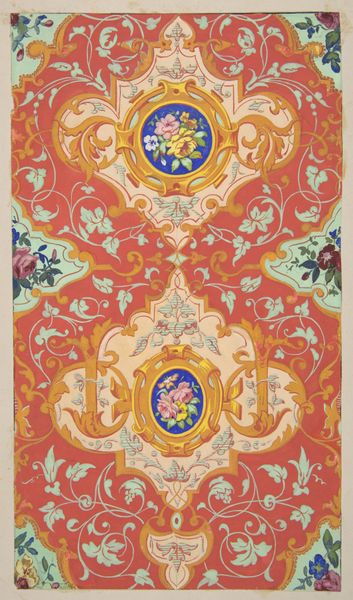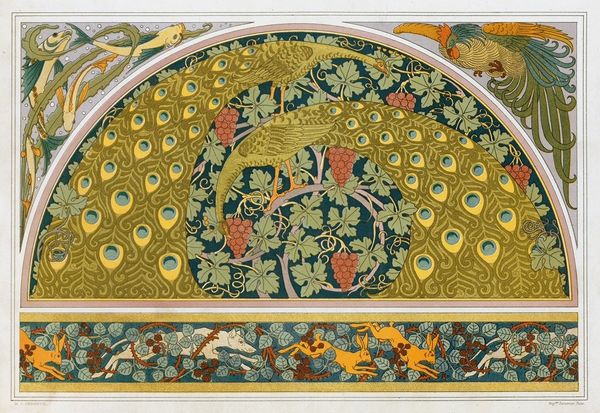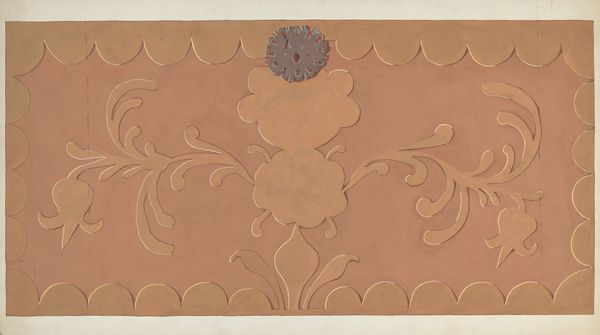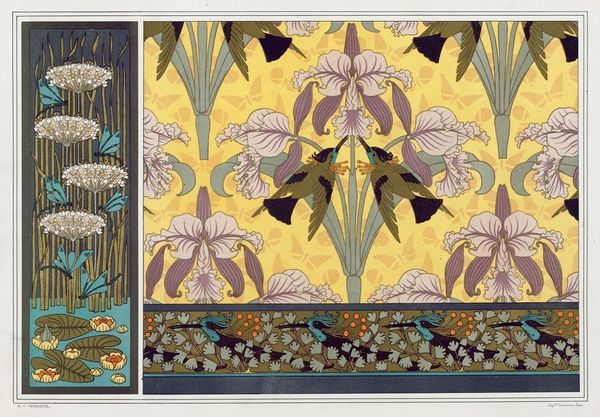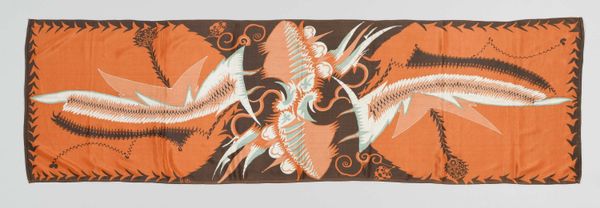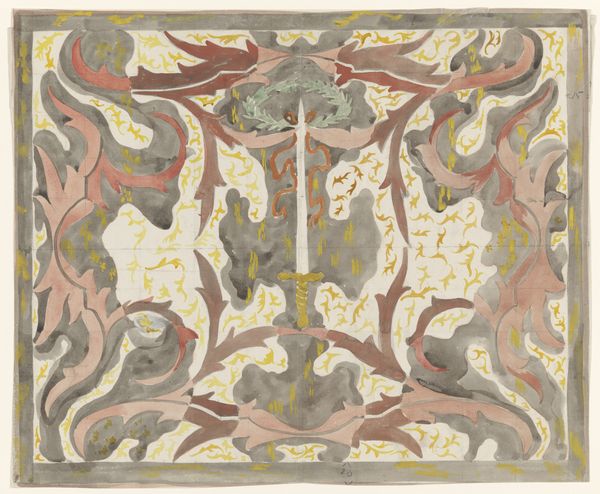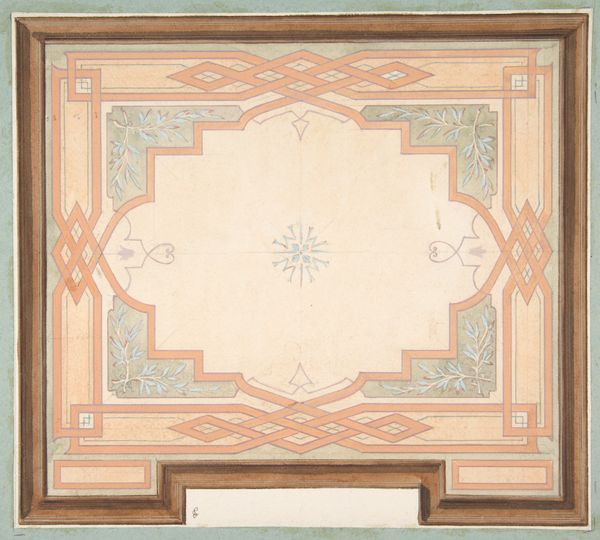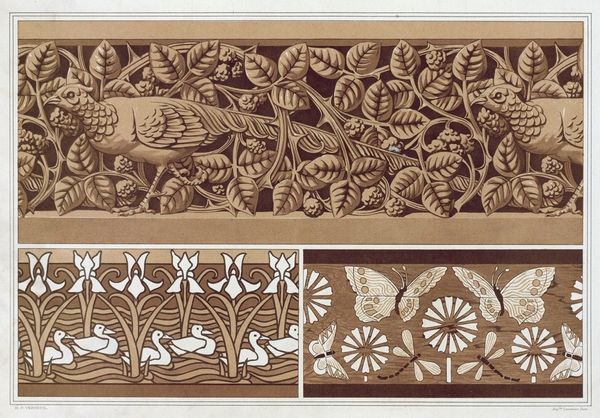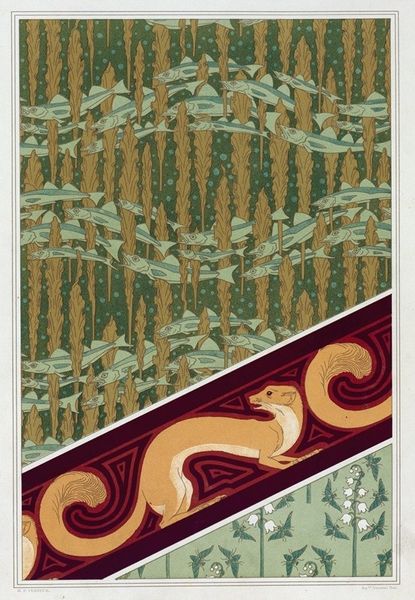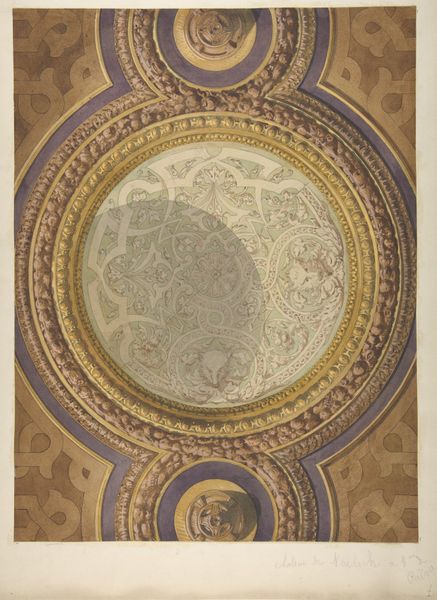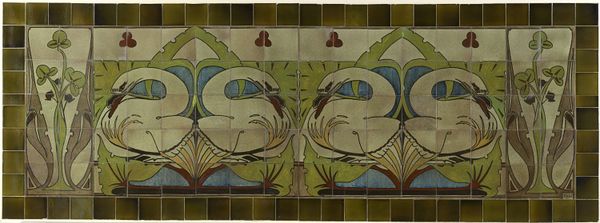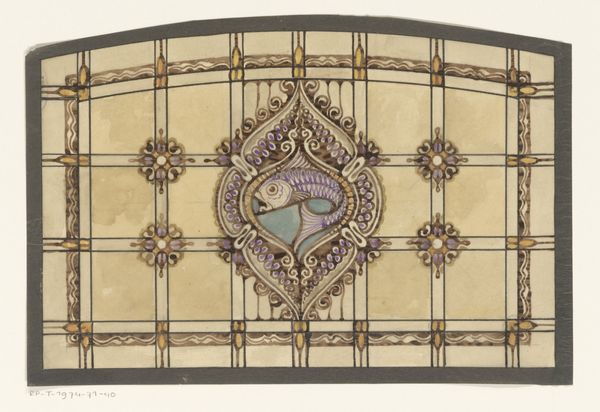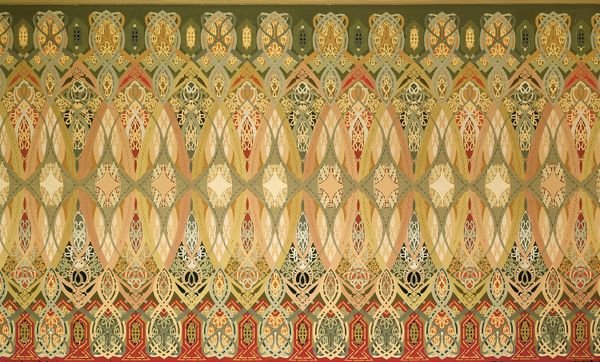
Grenouilles et nénuphars, bordure; libellules, pochoir; poissons volants, libellules, bordures; milan et rat 1897
0:00
0:00
print, poster
#
tiling design
#
naturalistic pattern
#
art-nouveau
# print
#
pattern
#
landscape
#
pattern background
#
geometric
#
decorative-art
#
poster
#
ethnic design
Copyright: Public Domain: Artvee
Curator: I'm drawn into this print by Maurice Pillard Verneuil, titled "Grenouilles et nénuphars, bordure; libellules, pochoir; poissons volants, libellules, bordures; milan et rat"— a mouthful, I know! It was created in 1897. Editor: My first thought? It’s…surprisingly playful. All those borders within borders—and that palette of orange and greens creates this overall flat, decorative effect. But it's also undeniably unsettling with the predator eagle. Curator: Yes, that tension is quite something. Verneuil's Art Nouveau approach layers these very stylized natural motifs—frogs, dragonflies, fish—and, yes, a rather dramatic hawk seizing a rat! It is so beautiful in that turn of the century decadent way that borders on discomforting. Editor: Well, Verneuil wasn't just an artist; he was deeply involved in the burgeoning applied arts movement. These weren’t simply fine art prints meant for gallery walls; they were design templates intended to be applied across textiles, wallpapers, perhaps even ceramics. I bet the choices of flat perspective and tiling were to make it easier for machines to imprint and reproduce across materials. Curator: Precisely. And considering that this piece involves the "pochoir" technique—applying color through stencils—it’s clearly meant to be repeatable. Editor: This emphasis on mechanical production challenges traditional, hierarchical definitions between crafts and high art that art nouveau loved to toy with, doesn't it? Imagine the workshops where these prints ended up; it connects Verneuil's artwork to artisans, to their skills, labor, and ultimately, the consumer objects around 1900. The beauty here isn't divorced from function and labor; rather, its aesthetics reflect that relationship. Curator: So true, you’re framing how it connects directly to the broader cultural shift towards industrialized beauty, which has its own complex shadow that we often tend to sanitize. Seeing that eagle again now in that context… it all just really speaks to nature’s raw power molded through mass-produced art. Editor: Yes, I appreciate this new look into mass production in the context of Verneuil's unique, artistic voice, the fusion of art and functionality in the birth of modern design.
Comments
No comments
Be the first to comment and join the conversation on the ultimate creative platform.
